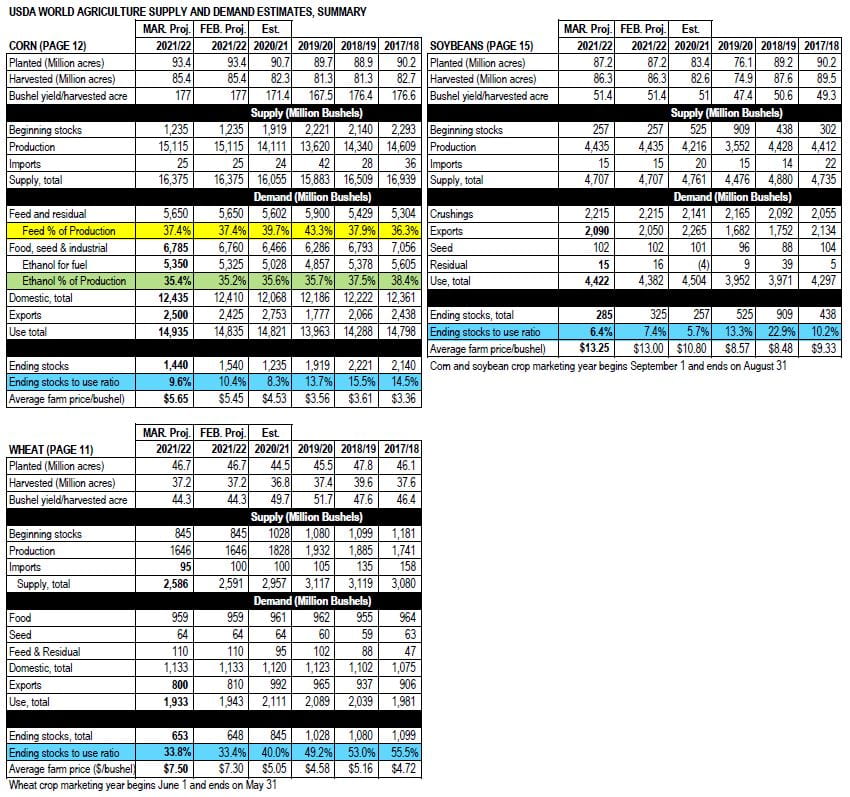1Kurt Vollmer, Weed Management Specialist | kvollmer@umd.edu and 2Mark VanGessel, Weed Management Specialist
1University of Maryland Extension and 2University of Delaware
The shortage of glyphosate (Roundup, Gly Star, etc.) and glufosinate (Liberty, Interline, etc.) herbicides are forcing farmers to seek other options for burndown and postemergence spray. No one anticipated this shortage and very little research has been done to address this issue. Many of us had to dust off our notes from the early 1990’s, the time before cheap glyphosate was available. One thing is certain, alternative weed control options will require more targeted management. The key is to plan ahead, select herbicides based on the weeds in the field, and make timely applications. Your mindset needs to be that you are not substituting a herbicide for glyphosate, rather you are using a different herbicide that has its own set of recommendations and limitations.
Alternative herbicides will not control as many weed species as glyphosate; in fact, some are only effective on a few weed species. Weed populations differ from field to field, so it is likely that herbicide mixtures will need to be adjusted for specific fields. Scouting will be key to selecting the right herbicide combination for a particular field. Scouting should be performed multiple times during the growing season to identify the species present and be sure weeds are small at time of application. In addition, it is important to check after a treatment is made to be sure it was effective.
Field records and past experience will help you decide which fields to prioritize for treatment with glyphosate or glufosinate. Targeting those “problem” fields or fields that will be rotated to vegetables for glyphosate or glufosinate applications.
Making Glyphosate Go Further
Use the correct glyphosate rate for the situation. In the past few years, many have simply used a quart of glyphosate (regardless of brand) because it was easy and still quite cost-effective. Matching the rate based on formulation and weed size will help conserve glyphosate and allow more acres to be treated. The amount of glyphosate in formulated products ranges from 41% to 51.2%. In practical terms, the rate of various brands can vary widely. For example, the Roundup PowerMax 3 rate for most annual weeds is 20 fl oz, while the same amount of glyphosate in a popular generic version is 32 fl oz.
Also, using glyphosate at higher use rates often overcomes issues that could reduce performance. So be sure to review the label for recommended adjuvants and any tank mixtures to avoid.
Start Clean
“Starting clean” means weeds are dead at planting. This is important since it is difficult to control many species like horseweed or Italian ryegrass after planting. Spring tillage is an option for replacing burndown herbicides; but tillage can negatively impact soil health, and stimulate the emergence of weeds such as common ragweed and Palmer amaranth.
For no-till corn, paraquat plus atrazine or paraquat plus simazine have worked very well on most of our acreage, including fields with horseweed and seedling grasses. One exception is Italian ryegrass, and this is a situation that may warrant using glyphosate.
For no-till soybeans, which are often sprayed 2 to 4 weeks later than corn, winter annual weeds will be larger and more challenging to control. Paraquat plus metribuzin is effective on smaller broadleaf weeds. Back in the ‘90’s when glyphosate was too expensive to spray across all acres, sequential applications of paraquat were commonly used. The recommendation was to use paraquat plus metribuzin 2 to 3 weeks before planting and then a second application at planting with the residual herbicides.
Fields with “problem” winter annual weeds may need an early herbicide application followed by an at-planting treatment. Herbicide options for soybean burndown include Sharpen, Elevore, 2,4-D or dicamba for horseweed; Canopy EX plus 2,4-D for field pansy and primrose control; metribuzin for chickweed and henbit; and Select (clethodim) for grass control (although clethodim is weak on annual bluegrass). Tankmixing broadleaf herbicides such as 2,4-D or dicamba with clethodim can reduce grass control; using higher rates of clethodim and spraying smaller grasses can reduce the likelihood of antagonism. The alternative is to separate applications. Clethodim and other grass herbicides should be made 2-3 days before or 7 days after a broadleaf herbicide.
Paraquat plus metribuzin is useful for terminating cover crops, including legumes and brassicas. Paraquat is more effective for terminating winter wheat or cereal rye when it is applied at the boot stage or later. Delaying cover crop termination until 7 to 14 days before planting will enhance overall weed control by allowing more cover crop biomass to form, which results in fewer weeds emerging and slowing the growth of emerging weeds. Paraquat applications before the boot stage often allow cereals to regrow. Clethodim could be used to control cereal cover crops before the boot stage.
Burndown for double-cropped soybeans will also be challenging without glyphosate and/or glufosinate. Paraquat and 2,4-D are not good options as they are more likely to move off-target that time of year. This may be another situation that gets priority for glyphosate and/or glufosinate applications.
Include Residual Herbicides at Planting
A good residual program will help delay a postemergence herbicide application. Two or more herbicide groups will be needed to provide broad-spectrum control of all the potential weeds that may emerge. A corn program should include at least atrazine and a group 15 herbicide such as S-metolachlor or acetochlor. Using products that include group 27 herbicides (Balance Flexx, Acuron, Corvus, Lumax) can also help.
A soybean program should include at least two effective herbicide modes-of-action from group 14 (Valor, Authority), group 5 (metribuzin), group 15 (Dual, Warrant, Zidua), or group 3 (Prowl). Group 15 herbicides provide good grass control and can reduce the likelihood of needing to treat postemergence with a product such as clethodim (Select) or sethoxydim (Poast). Several prepackaged mixtures of these herbicides are also available but be sure to check to ensure they are the appropriate rates for your situation. Regardless of what programs are chosen, an activating rainfall of about half inch will be needed.
Make Timely Postemergence Applications
Postemergence control is more successful with small weeds; thus avoiding the urge to wait for all weeds to emerge prior to spraying or cultivating. Corn is most susceptible to yield loss from weed competition during the V1 to V6 growth stages, and soybean at the V1 to V5 growth stages.
Because it is cooler during the early stages of corn growth than soybeans, it creates a wider window of application for corn. Postemergence treatments in corn are more effective when corn is less than 12 inches tall because it allows the use of atrazine. In corn, group 27 herbicides such as Armezon, Callisto, or Laudis plus atrazine provide effective control of weeds like Palmer amaranth. Impact, Armezon, and Accent Q will provide good to excellent control of most grass species.
Postemergence herbicide applications in soybeans are most effective when soybeans have less than 4 trifoliates, and weeds are less than 4 inches tall. In local research, this is typically 3 to 4 weeks after planting. In soybean, postemergence herbicide options will be trait-dependent. Group 14 herbicides such as Cobra, Reflex, and Ultra Blazer can be used in non-GMO soybean. Dicamba-containing products such as Xtendimax, Engenia, or Tavium can be applied to Xtend and Xtendflex soybeans; and 2,4-D choline (Enlist One, Enlist Duo) can be applied to Enlist E3 soybeans. Glufosinate and glyphosate-based products can also be applied to Enlist E3 and Xtendflex soybean. If planning to use these products, growers need to be aware of restrictions as well as specific requirements for adjuvants, nozzles, buffers, etc. which can be found at
Residual herbicides such as Dual, Warrant, or Zidua can be included with postemergence treatments to help extend weed control capabilities until the crop canopies. (note: Reflex provides both postemergence and residual control). This will be cheaper than making multiple postemergence applications.
Optimize Herbicide Performance
It is important to maximize the performance of herbicides and most of this information is available on herbicide labels. Adequate spray coverage is important for contact herbicides like glufosinate and fomesafen. Applications of contact herbicides should be made at 15 to 20 gallons per acre with nozzles that produce medium to coarse droplets to ensure good coverage. Growers should also follow recommendations for adjuvants.
When tankmixing herbicides it can be challenging if recommendations differ by product, such as droplet size does not match or required adjuvants may differ. For instance, Enlist One requires large droplets to avoid drift while a contact herbicide, like Reflex, recommends smaller droplets to improve spray coverage. In this case, select a nozzle from the Enlist label that produces the smaller droplets.
Environmental conditions such as temperature and time of day will also affect the performance of herbicides. In particular, conditions during burndown applications can be challenging; and if applications are made during poor growing conditions, control is often reduced. There are very few alternatives to waiting for better weather. Generally, contact herbicides such as paraquat and fomesafen are more effective when sunlight is more intense. Glufosinate has specific recommendations for applications between the hours of 10 AM and 2 PM to ensure there is adequate sunlight to maximize performance.
Including other tactics to reduce weed competition can enhance an effective herbicide program. A healthy, competitive crop will reduce late-season weed emergence. The quicker a crop canopy develops, the less likely it will be for additional weeds to emerge. Reducing soybean row spacing from 30 to 15 inches will allow for quicker canopy closure. A timely cultivation can replace a postemergence herbicide application in fields with light weed pressure.
Preparing ahead of time and considering all the options will help ensure the highest level of weed control. Have a conversation with your crop advisor on which options are best for your fields and focus on managing small weeds.
For additional resources on herbicide selection see your extension weed management guide available at www.pubs.ext.vt.edu/456/456-016/456-016.html; and for weed identification and integrated weed management tactics see Virginia Tech Weed ID website (https://weedid.cals.vt.edu/) and Get Rid Of Weeds (www.GROWiwm.org).





